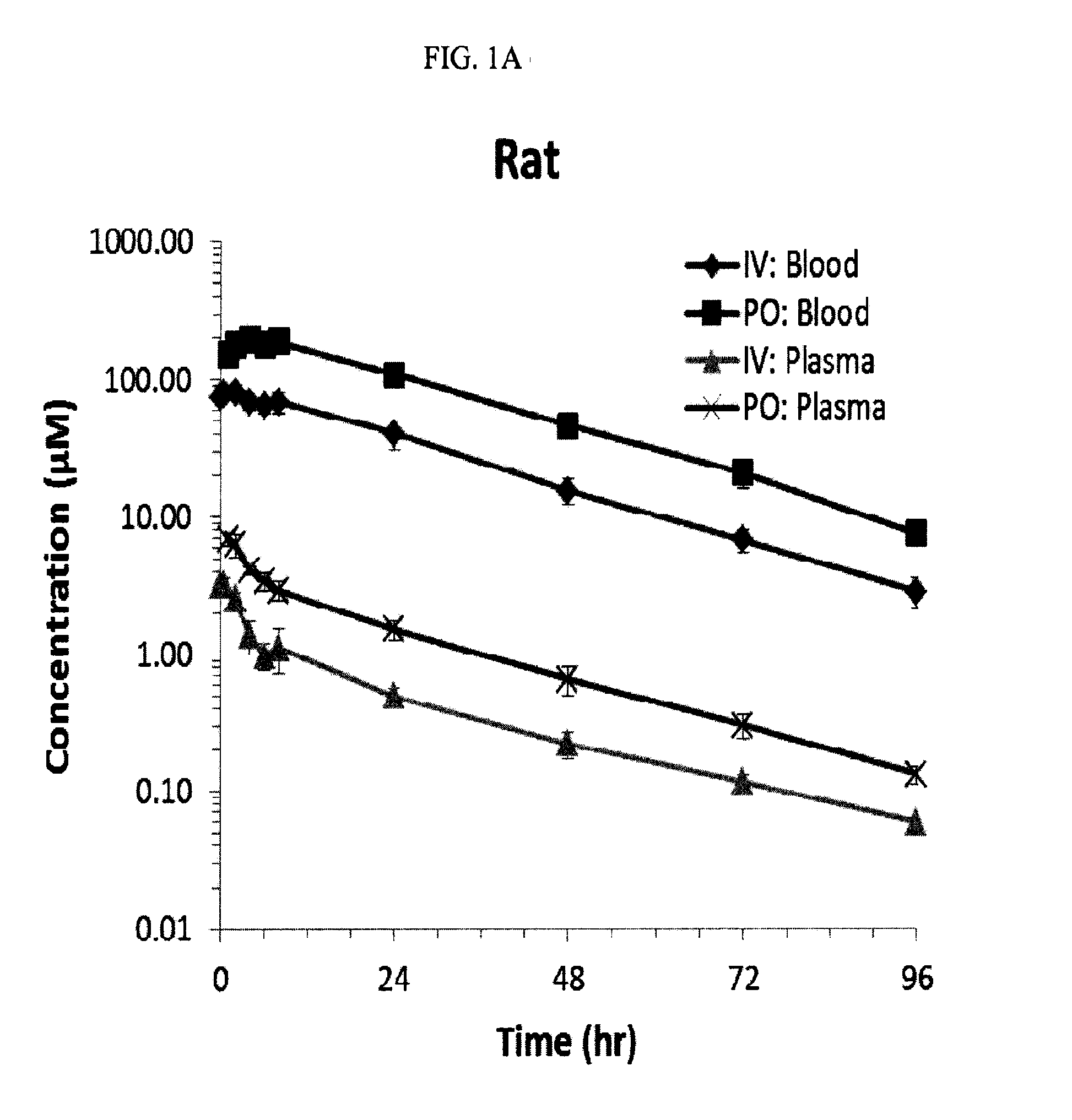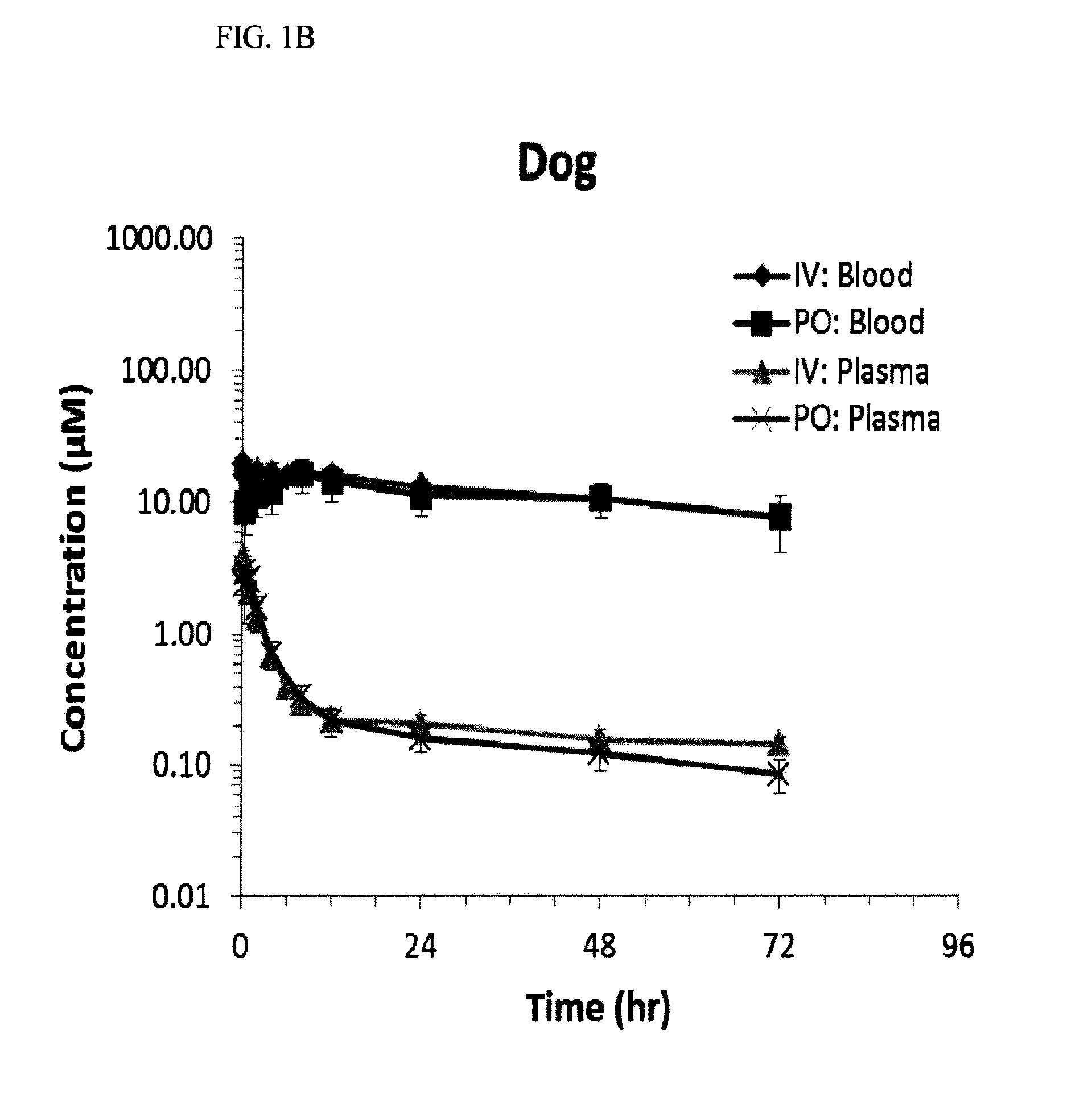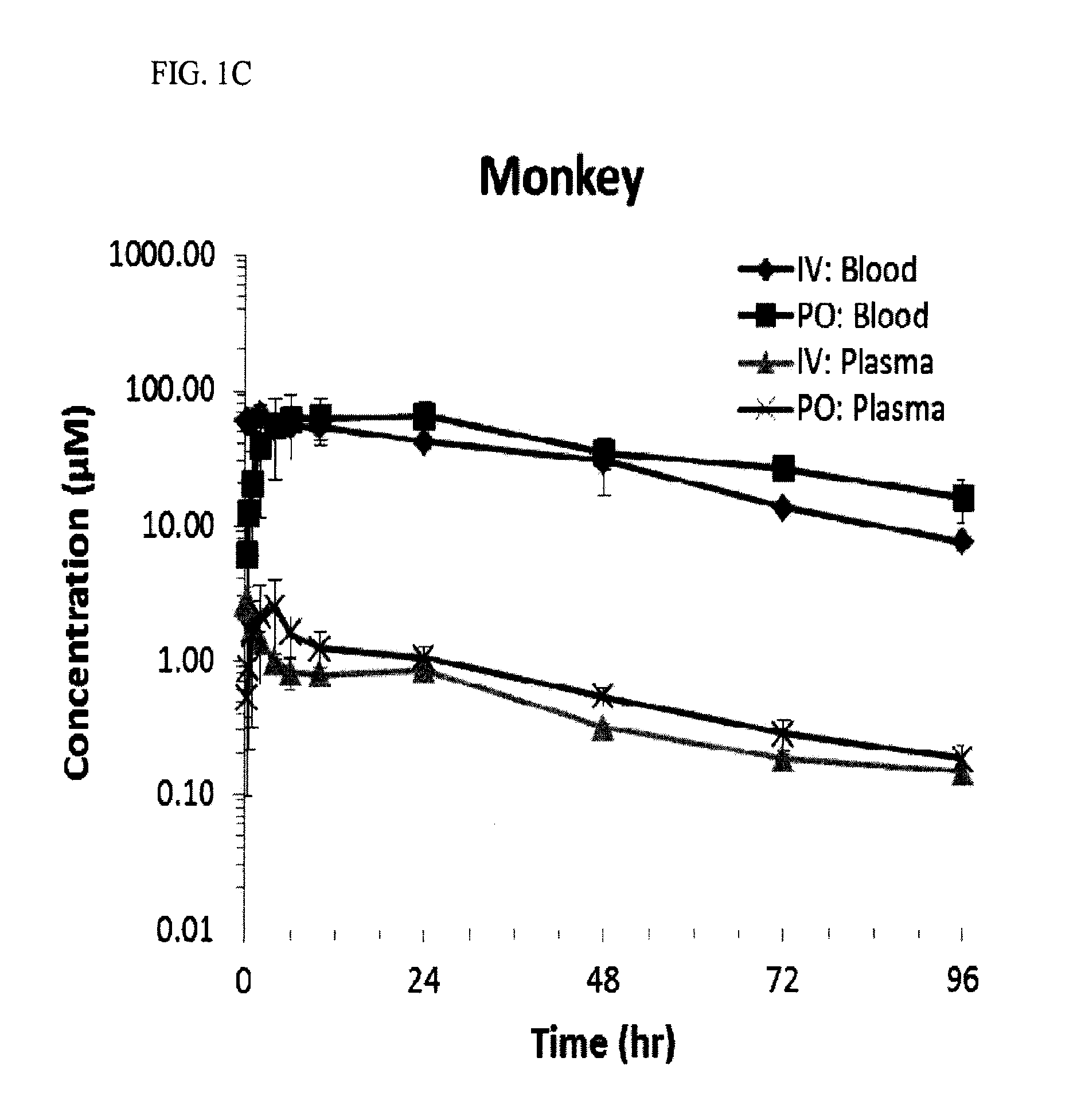Compositions and methods for the modulation of hemoglobin (s)
a technology of allosteric modulation and composition, applied in the field of pharmaceutical compositions for allosteric modulation of hemoglobin, can solve problems such as blood vessel blockage, and achieve the effects of high rbc partitioning, high oral bioavailability, and sustained exposur
- Summary
- Abstract
- Description
- Claims
- Application Information
AI Technical Summary
Problems solved by technology
Method used
Image
Examples
example 1
[0046]The compounds provided in the present invention are allosteric modulators of hemoglobin. As such, these compounds do not modulate red blood cells by themselves. Instead, the response of red blood cells to a concentration of hemoglobin is increased when compounds of Table 1 are present. Compounds of Table 1 are expected to have their effect on red blood cells by virtue of their ability to enhance the function of hemoglobin.
[0047]This experiment was established and used in order to assess the pharmacokinetic (PK) properties of the compounds.
[0048]Sample collection and data analysis: Rats (Sprague-Dawley, male, 8-12% weeks old) were dosed with one of three compounds corresponding to compound 12, compound 22 or compound 23. The rats received oral (10 mg / kg) or intravenous (1 mg / kg) doses of the compound. Rats were fasted overnight before the experiments and provided with food after the 2 hour sampling time point.
[0049]Blood samples were collected at different time points. Blood wa...
example 2
[0057]Another series of assays were conducted in order to assess additional pharmacokinetic (PK) properties of the compounds from Example 1.
Reverse Hemox Assay
[0058]Oxygen Equilibrium Curves (OEC) of whole blood before and after treatment with different concentrations of compounds 12, 22 and 23 were performed as follows using a HEMOX analyzer (TCS Scientific, New Hope, Pa.). Blood samples from homozygous sickle cell patients were obtained though the Hemoglobinopathy Center at Children's Hospital Oakland Research Institute (CHORI) with Institutional Review Board approval. The hematocrit was adjusted to 20% using autologous plasma and the blood samples were incubated for 1 hour at 37° C. in absence or presence of compounds. 100 μl of these samples were added to 5 mL of Hemox butter (30 mM TES, 130 mM NaCl, 5 mM KCl, pH=7.4) at 37° C. and then transferred to the Hemox sample chamber. The samples were saturated with oxygen by flushing with compressed air for 10 minutes. The samples were...
example 3
[0065]Another set of assays was conducted to determine the effect of compounds of the invention on the oxygen affinity of hemoglobin and rheological properties of blood.
Oxygen Dissociation Assay
[0066]In a 96-well format oxygen dissociation assay (ODA), compounds 5, 9, and 12 were all more potent at increasing the oxygen affinity of HbS than 5-hydroxy furfural (5-HMF), an agent currently being tested in clinical trials in patients with sickle cell disease.
[0067]Results: Table 4 below lists the change in oxygen affinity (Δoxy state). After two hours of passive deoxygenation, compound 12, at an equimolar concentration to Hb, increased the Hb oxygen affinity by 6-fold. Even when compound 12 was present at substoichiometric concentrations (ratio of compound 12 to Hb of 1:3), there was a two-fold improvement in oxygen affinity for Hb that translates to 16% more oxygenated Hb present.
[0068]The agents were then assayed in a TCS Hemox analyzer using purified Hb at 25 μM. At a compound 12:Hb ...
PUM
| Property | Measurement | Unit |
|---|---|---|
| time | aaaaa | aaaaa |
| volume | aaaaa | aaaaa |
| viscosity | aaaaa | aaaaa |
Abstract
Description
Claims
Application Information
 Login to View More
Login to View More - R&D
- Intellectual Property
- Life Sciences
- Materials
- Tech Scout
- Unparalleled Data Quality
- Higher Quality Content
- 60% Fewer Hallucinations
Browse by: Latest US Patents, China's latest patents, Technical Efficacy Thesaurus, Application Domain, Technology Topic, Popular Technical Reports.
© 2025 PatSnap. All rights reserved.Legal|Privacy policy|Modern Slavery Act Transparency Statement|Sitemap|About US| Contact US: help@patsnap.com



